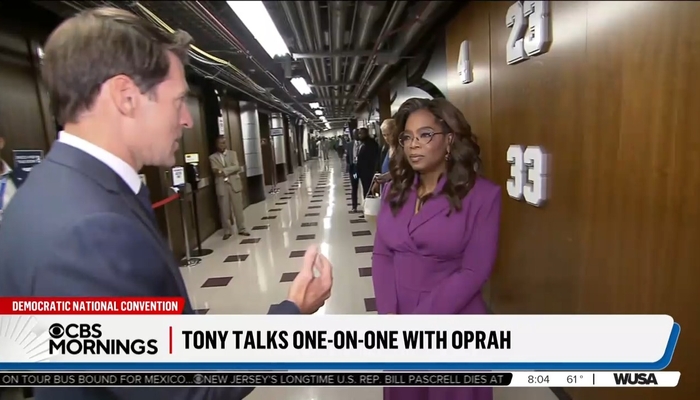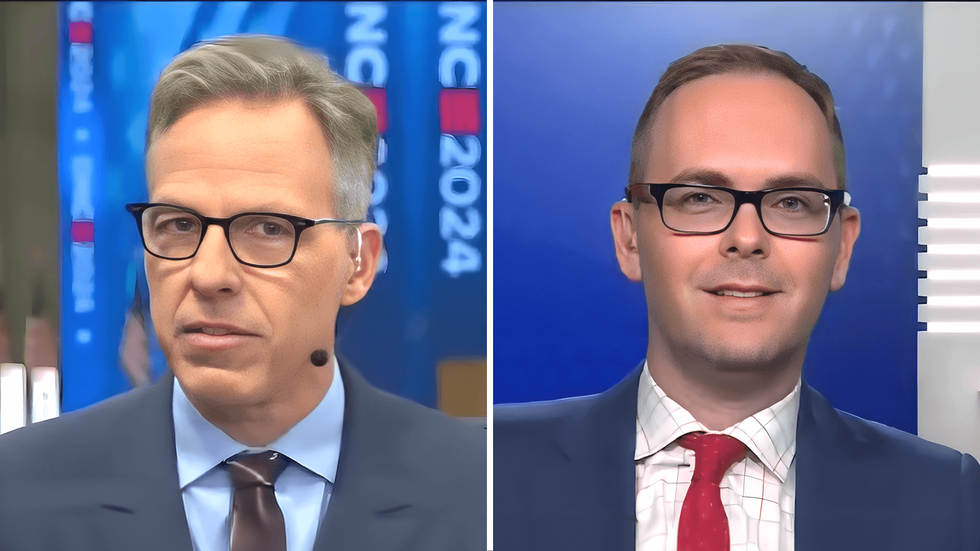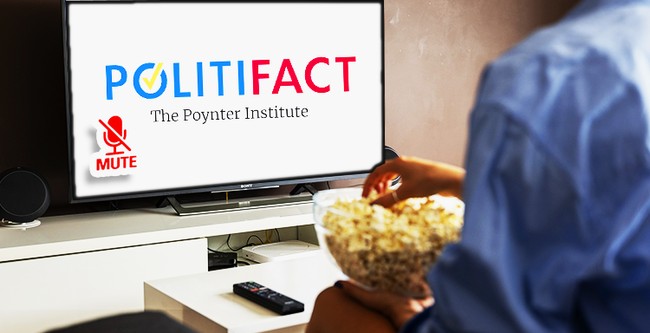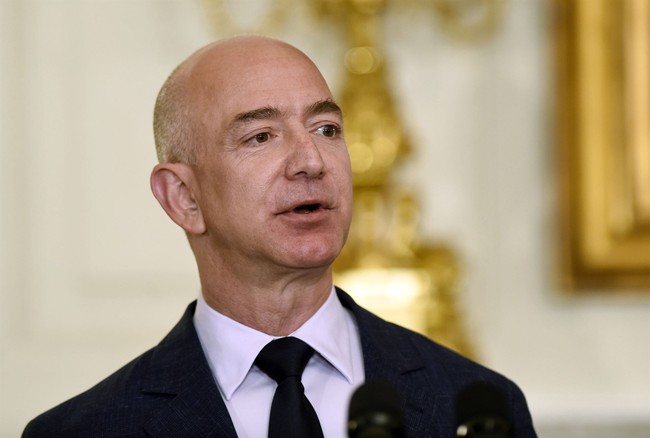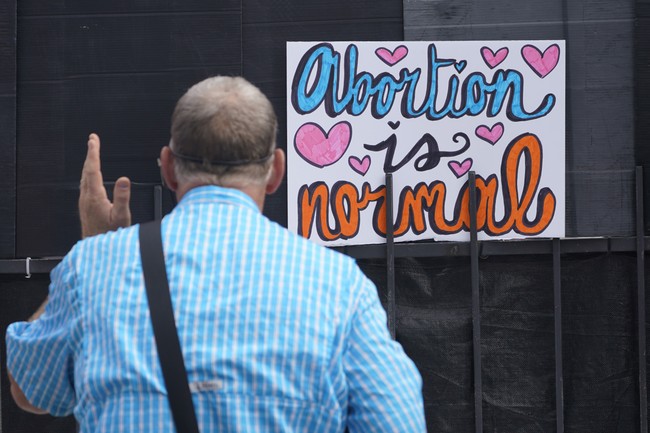
www.newsbusters.org
Here Were the Worst Moments From CBS’s Syrupy Celebration of Oprah/Walz at the DNC
Thursday’s CBS Mornings spent nearly its entire two hours of run time (with commercials) celebrating the previous day’s proceedings at the Democratic National Convention as if they have a personal stake in ensuring Vice President Kamala Harris and Governor Tim Walz (D-MN) win in November.
Not only that, but the show felt the need to ebulliently hold up the various speakers at the DNC, including Oprah Winfrey, which was no surprise given she’s the best friend of co-host, Democratic donor, and Obama family friend Gayle King.
Below is an Notable Quotables-style package of the dumbest moments, presented in chronologicl order.
Salivating Over “Classic, Vintage Oprah”
King: “When she was rehearsing, she didn’t deliver it like that. But that was — that was classic, vintage Oprah Winfrey.”
Co-host Tony Dokoupil: “She really belted it out, and I feel like they’re adding extra seats to the arena every night, because it gets louder and louder and more and more packed more.”
King: “But this is the night tonight. This is when you want to be here...Last night, we heard from Minnesota Governor Tim Walz as he accepted the vice presidential nomination. He was a huge hit in this room. It was a very emotional speech, but Walz’s family was even more pumped up in the audience. With his son, at one point, jumping up and appearing to yell, ‘That’s my dad.’”
Dokoupil: “It sure looked that way. It was a speech that capped off a star-studded third night of the Democratic convention[.]”
— Lead-off banter, 7:02 a.m. Eastern.
Fawning Over Walz Playing the Role of “Great” Coach Leading “Raucous Pep Rally”
“Tony, I know you’ve had some great coaches over the years, so you know that the job is to motivate the team to get out there and play their best. And aides tell me that that was Walz’s goal last night. Yes, he wanted to introduce the country to his philosophy, his background, his politics, but first and foremost, he wanted to fire up the Democratic team for the tough two-and-a-half months that lie ahead....Standing before a sea of Coach Walz signs, the governor of Minnesota led a raucous pep rally for the woman at the top of the ticket....He touted his progressive wins as governor the last six years...The veteran hunter and dad of two laid out how he and Harris would govern in the plainspoken style that helped propel him to the top of her list...[I]t was Walz and his family who were at the heart of night three just two weeks after he was bumped up to varsity and thrust into the game.”
— Opening recap from chief White House correspondent Nancy Cordes, 7:03 a.m. Eastern.
Don’t Worry! We’ll Still Need to ‘Continue to Tell’ Kamala’s Story Post-DNC
Former Harris adviser Ashley Etienne: “[S]he’s going to tell the story of the Kamala Harris that I know in those rooms, someone who sees people who has a compassion and a care for the plight of the American people, and how she spent her career fighting on their behalf...[I]t won’t end at the convention. We will continue — the party is going to continue to tell the story about who she is, but I think she’s going to start with, you know, her first days, her first memories being in that stroller, fighting and marching for the rights of all people and that’s her very ethos.”
Dokoupil: “You know, it’s been pointed out. There is no policy section to the campaign website. Now, I think people would be suspicious if she rolled out thousands of pages of documents. You know, who wrote those? However, is it time for her to put a little more detail on the proposals?
Etienne: “Well, I mean, I think we have to be fair to Kamala Harris and the campaign. A., it’s only been four weeks, but B., she rolled out a huge economic plan last week...[W]e’ll see over the course of the next 70 some odd days, more and more policy.”
— Discussion at 7:12 a.m. Eastern.
Dickerson: “Everyone Has...a Tim Walz That They Know”
“You have to be a hit in the room. You have to do no harm. He spoke for a short amount of time. Also very smart. You don’t want to upstage the boss, but the tableau of Tim Walz is what’s so useful for the campaign. You know, everybody has got a schoolteacher or a coach in their life...People know that relationship...[Y]ou also have to have some notes that touch people in their lives, and everybody has kind of a Tim Walz that they know, and that’s helpful when you’re basically making the case, we will have you in mind when we put forward these policies.”
— CBS News chief political analyst John Dickerson, 7:14 a.m. Eastern.
Walz ‘Put a Democratic Spin on’ ‘Small Town Values’, Taking ‘Freedom’ Mantle From GOP
Dokoupil: “John, the language of the speech was also really fascinating, because he talked a lot about small town values, which lately has been associated with Republican politics, but he put a Democratic spin on it. He said it’s about loving your neighbor, but also minding your own business. Talk about that.”
Dickerson: “Yes, well, first of all, the loving your neighbor....Look at what the Obama message was, show grace to those people you disagree with. Bill Clinton made that point. Oprah made that point. Tim Walz made that point. In other words, extend the family of possible voters, but also just the human family of America. The mind your own business part, is a part of what the Democratic Party is trying to do, which is take the word freedom, take the word away from Republicans who have normally talked about that freedom in the Republican case, from government intruding in your life, so we’ll see if it works, because there’s nothing more appealing, if you can sell it to the American people than the idea of freedom.”
King: “I’ve heard, you know, mind, your own business is effective, really, in most things in life.”
— Democratic cheerleading, 7:15 a.m. Eastern.
Celebrating With Oprah After Her Speech Endorsing Kamala Harris
Dokoupil: “Well after we heard that speech from Oprah, those powerful words, we grabbed a stick mic and a single camera, and we hustled backstage to catch up with her. This is what resulted. [TO WINFREY] Gayle said that you were reluctant to take a speaking slot tonight. What pushed you over the edge?”
Winfrey: “Well, I feel the momentum of this moment and this time. And I feel, even before Michelle Obama said it last night, I feel like we all have to do our part. We all have to do something. And I feel that, you know, we all have been in multiple conversations about what’s going to happen? What should we do? What can be done? And now that we have this opportunity. I felt like I should grab this opportunity. So when they called and asked, I said, yes.”
Dokoupil: “Your capital with the public is enormous — trusted, respected. Are you risking anything at all entering the political arena to endorse Kamala Harris?...So why was it so important to risk that reputation, all of that trust, all of that capital for this moment?”
Winfrey: “Because I really care about this country, and there couldn’t have been a life like mine, a career like mine, a success like mine, without a country like America...[A] lot of things are on the line. A lot of things are at stake. And if ever you’re going to stand up and fight for your country and fight for freedoms, freedoms that you know, I don’t need the right to abortion, but I believe that the right to control your body...is essential...[A]ll of the freedoms that I have enjoyed... I feel that they’re on the line...[W]hat is it going to cost me other than knowing that I had to do whatever I could to speak up.”
Dokoupil: “What will it mean to you to see Kamala Harris take the oath of office as the first female president of the United States?”
Winfrey: “You know, everybody uses the phrase all the time that you know, I mean, anything is possible. It will mean that the glass ceiling has been shattered, that the ceiling on any potential for anybody has been disrupted. There will be weeping in the streets, and I will be among those weeping in the streets, okay? Women all over the world will be weeping in the streets. It will mean that actually anything is possible, because this is her mother, her father, immigrants coming to the United States of America. Only in America could Kamala Harris’ story be possible. And I’m here because only in America could my story be possible.”
— Interview at 8:03 a.m. Eastern.
Oprah ‘Knocked It Out of the Park’ with Speech to Remember “For a Long, Long Time”
Dokoupil: “She — you know, she says the truth is the most powerful tool we all have, and she certainly spoke hers last night.”
King: “Yes. And she was tweaking and working on the speech, I think she knocked it out of the park. She also said, I just thought I did okay. No, you did more than okay. You did more than okay.
Dokoupil: “She did.”
King: “She knocked it out of the park.”
Dokoupil: “She did a really great job.”
King: “I think so, too.”
Dokoupil: “Yes. It’s going to resound for a long, long time.”
— Post-interview reactions, 8:08 a.m. Eastern.
Hoping Kamala Is “Effective”, “Joyful”, Show Americans “They Know” You
Cordes: “Well, I guess she needs to be joyful first and foremost, because for three nights, speakers have been talking about how much joy she has. So the pressure is on, right?”
King: “And that’s been very deliberate, and it seems to be very effective —”
Cordes: “Yes. It has been, but she’s got to breathe into it tonight.”
King: “— to pitch her that way, yes.”
Cordes: “And then, I think beyond that, it’s really simple. She needs to define who she is. She has been living in Joe Biden’s shadow...[S]he needs to talk about her background, her life story, her philosophy. If you watch the current and former presidents on the stage the last three nights — Obama, Clinton, Biden — they won in part because Americans just felt like they knew who they were.”
— Kamala Harris wish-casting, 8:15 a.m. Eastern.
“Electric” DNC Has “Nonpartisan Overture” Like a “Friday Night Likes” Episode
King: “I have a friend of mine, a grown ass man who said to me, I haven’t put on my jersey in years, but this guy made me want to put on my football jersey and suit up and get out there and do something. I thought that was very funny. Talk about the importance of Tim Walz to this campaign, because he knocked it out of the park, according to the people in this room last night.
Chief campaign and election correspondent Robert Costa: “Oh, it was electric in here for Democrats, and they believe that Tim Walz makes this about something bigger than politics. It’s almost like an episode of Friday Night Lights. You have high school football players, teachers, people who come from everyday jobs. They’re all united here and they’re saying to the country with their messages, with their speeches, you’re welcome if you’re a Democrat, of course, but you’re also welcome if you’re a Republican or an independent. There’s a nonpartisan overture that’s going on here at the Democratic National Convention.”
Dokoupil: “Yeah.”
King: “But what about the Republicans that took the stage in the Democratic Convention? One of them a Trump staffer, a former Trump staffer, and then the former lieutenant governor of Georgia. How unusual is that, that you have Republicans who are at a Democratic Convention saying, look, we’re going to vote for her.”
Costa: “What’s interesting about the Republican speeches — it’s not sharp-edged when it comes to their attacks on former President Trump...[W]e’re here to give you safe harbor as the Democratic Party.”
— Cockamamie pom-pom waving, 8:16 a.m. Eastern.
Syrupy Biographical Piece on Kamala’s Roots, Relationship With Willie Brown
Congressional correspondent Nikole Killion: “Kamala Harris was born in 1964 to immigrant parents. Her father, Donald, an economist from Jamaica. Her mother, Shyamala, a cancer researcher from India, who raised her and sister, Maya in this modest Berkeley Flats apartment...Carol Porter (sp?) first met Kamala at the bus stop where the two pigtailed, biracial girls were bused to Thousand Oaks Elementary to integrate Berkeley Public Schools....After graduating from Howard University in Washington, D.C., she returned to the Bay Area for law school and began her career at the Alameda County District Attorney’s office.”
Willie Brown: “I needed somebody I could trust.”
Killion: “Former San Francisco Mayor and California Assembly Speaker Willie Brown mentored Harris and appointed her to two state commissions. [TO BROWN] What did you see in her politically?”
Brown: “She exudes the quality of being concerned about everybody.”
Killion: “But the pair raised eyebrows when they dated in the mid- 90s. [TO BROWN] What do you say to people who feel like she may have improperly benefited politically from the relationship that the two of you had?”
Brown: “It was perfectly appropriate and legal in people helping each other.”
— First half of taped report, 8:22 a.m. Eastern.
Hitting Harris From the Left, Fawning Over Her as Someone “Going Places”
Killion: “Throughout her tenure, Harris cast herself as a progressive prosecutor and a top cop. She instituted a reentry program for low level offenders and secured a $20 billion settlement for California homeowners, but her approach on issues like the death penalty and mass incarceration has drawn scrutiny.”
Former LA County DA Steve Cooley: “She is putting herself out there as some sort of crime fighter to get away from the image of being soft on crime.”
Killion: “While her record became a liability in her first run for the White House, this time, she is leaning in —”
Kamala Harris: “I know Donald Trump’s type.”
Killion: “— prosecuting her case again for the presidency. For CBS Mornings, I’m Nikole Killion in Oakland.”
King: “Well, everybody is trying to get to know her a little better.”
Dokoupil: “Yes. It’s a middle class background financially, but both parents have a PhD. So intellectually, it’s on another level.
Killion: “And you can see at the time, at a very early age, she had things to do. She was going places.”
Dokoupil: “She really did.”
— Taped segment and post-segment banter, 8:24 a.m. Eastern.










